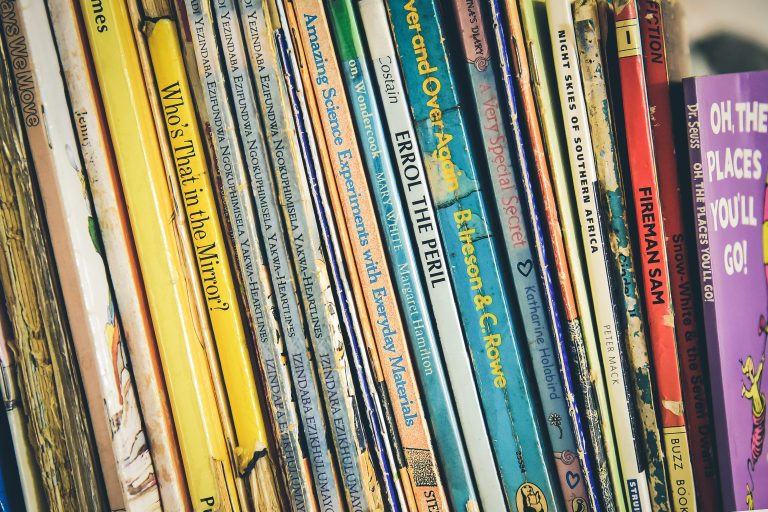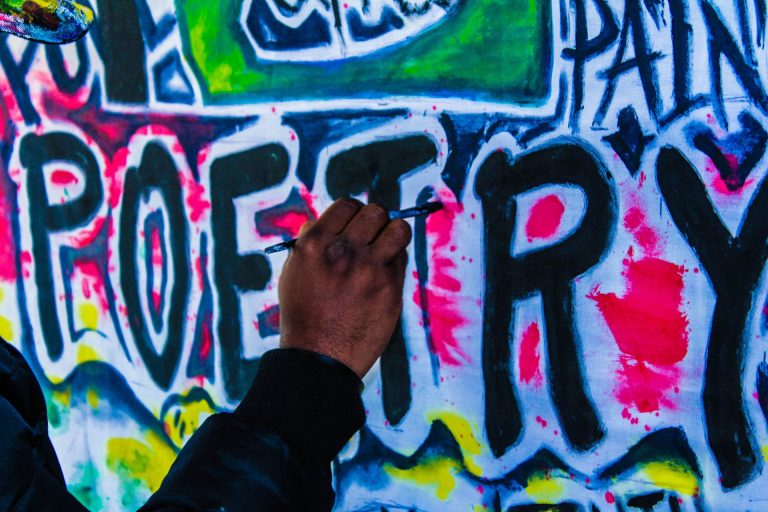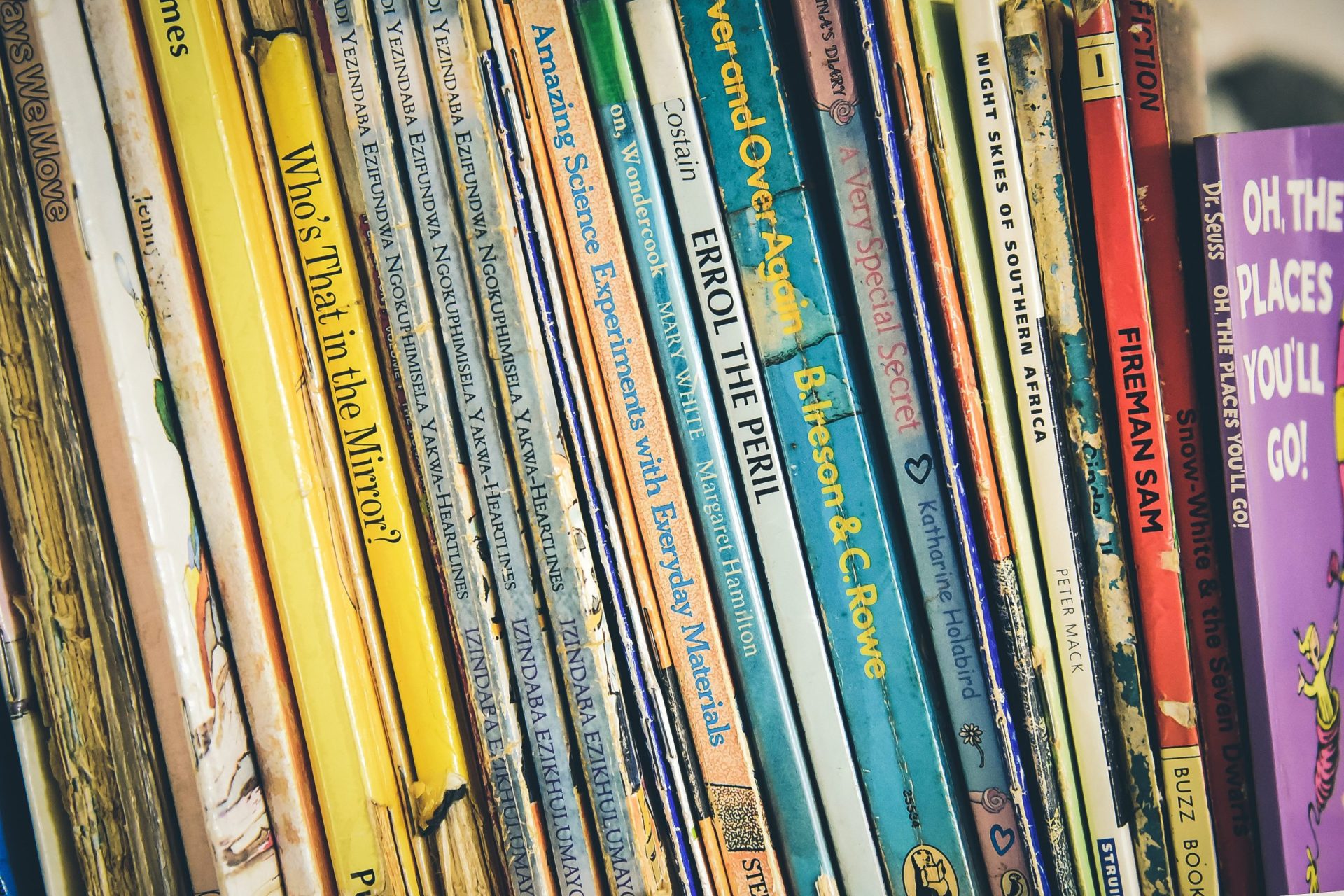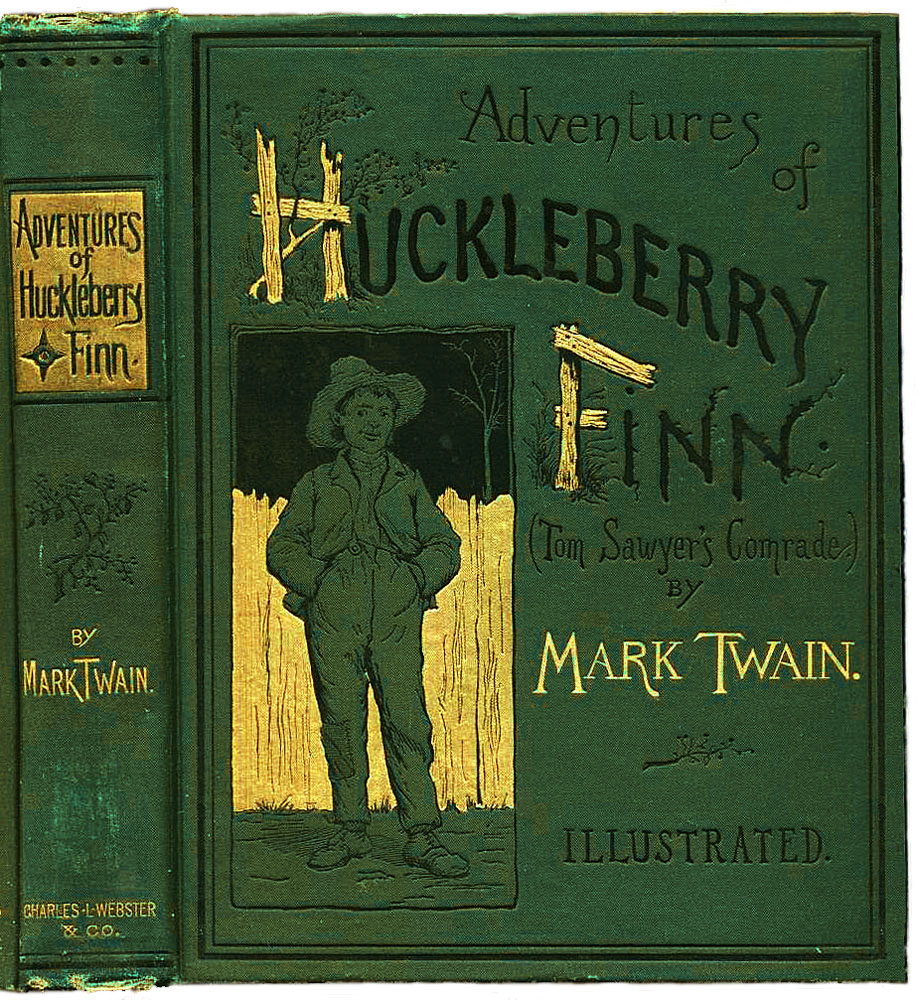The Top 10 Most Important Classic Books of All Time by Learnhall Contributor Vicky Zhang
Introduction
A classic book is an art piece that entertains, engages, and resonates with you, occasionally bringing confusion, conflict, and boredom. A masterpiece can steer your feelings with the unexpected plot and enlighten you with different lessons in each reading; it passes through geographical borders and is future-proof as it talks about human nature. The ultimate purpose of literature is to make the world a better place while we interpret the work, learn, and grow. So, there’s no wrong way to read, and you’ll always find something for you inside the pages.
The following recommendation on literary treasures consists of various genres, story backgrounds, writing styles, and central themes, a buffet ready for you to explore.
Anna Karenina (1878)
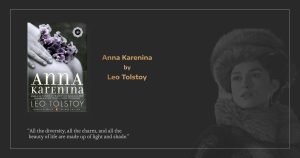
Written by the Russian author Leo Tolstoy (1828–1910, aged 82), Anna Karenina is a book spanning 8 parts in over 800 pages with more than 15 main characters, acclaimed as his “first true novel” by the author (Prahl, 2019). Leo Tolstoy was nominated for the Nobel Prize in Literature from 1902 to 1906 for 5 consecutive years; however, he never won, leaving a major controversy in literary history. Anna Karenina has led to media adaptations in 10 different languages, spanning various formats such as theater, film, television, and ballet (Wikimedia Foundation, 2022).
The story surrounds Anna Karenina’s passionless marriage with Count Karenin and her love affair with Count Vronsky through a detached and omniscient third-person narration. Revealed by the book’s opening sentence, “Happy families are all alike; every unhappy family is unhappy in its own way,” Anna Karenina discusses domestic life and the search for happiness. The novel has a moralizing purpose at first glance, exposing the evils of adultery. However, when uncovering the story from Anna’s perspective, we realize that the tragedy was perhaps unavoidable.
Jane Eyre (1847)
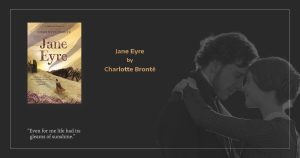
The English novelist and poet Charlotte Brontë (1816–1855, aged 38) composed Jane Eyre, first printed with the author’s pseudonym Currer Bell on the title page. Charlotte Brontë and her younger sisters, Emily and Anne, were all well-known writers; they had to publish with pen names because the societal environment at the time didn’t encourage female authors. Luckily, as the appreciation of Jane Eyre continued to soar, Charlotte Brontë claimed the authorship and connected with London’s literary circles (Academy of American Poets, n.d.).
Using an intimate first-person narration, the novel tells Jane Eyre’s coming-of-age story using Jane’s voice, allowing readers to see the psychology and emotion behind the events. Jane shares her childhood as an orphan, teacher and governess works, romance, and marriage. In contrast to popular novels in early 19-century Britain, Jane has a realistic personality—imperfect yet independent and determined—which is especially evident in her moral and spiritual growth. Some argue that the book is partially autobiographical because of the resemblance between Jane Eyre and Charlotte Brontë; I’ll leave you to decide if the rumor is true.
Madame Bovary (1856)
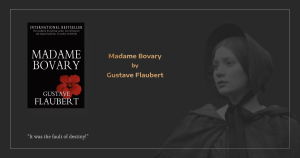
The French novelist Gustave Flaubert (1821–1880, aged 58) worked for 5 years to perfect his debut work Madame Bovary, a tragedy and literary realism masterpiece. Gustave Flaubert was as close as a perfectionist; he spent the whole day for a single page to craft a style that “would pierce your idea like a dagger, and on which your thought would sail easily ahead over a smooth surface.” (Flaubert, n.d) To celebrate his precise and lean writing, the research technology named FlauBERT (Le et al., 2020) was released on his 198th birthday; the study results can contribute to the autocomplete and predictive texts every time we type (Bengio, 2008).
Although the story is hardly scandalous for modern readers, in 19th-century France, Emma Bovary challenged convention by exposing a depressing marriage, destructive affairs, and the disappointment caused by the deceiving presentation of love in romance novels. Madame Bovary shook the literary world, leading to a trial against Gustave Flaubert and his publisher due to obscenity (Wikimedia Foundation, 2022). Nevertheless, Madame Bovary is a cautionary tale of the risks of illusion and romanticism while analyzing gender, power, and desire.
Nineteen Eighty-Four (1949)
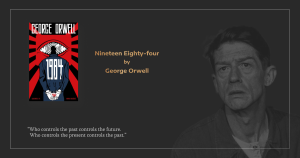
The dystopian fiction Nineteen Eighty-Four (stylised as 1984) is the 9th and last completed book of the English novelist, essayist, journalist, and critic George Orwell (1903 –1950, aged 46). His works encourage people to be considerate, sincere, and sensible; as he put it in his essay: “I write it because there is some lie that I want to expose, some fact to which I want to draw attention, and my initial concern is to get a hearing.” (Orwell, 1946) By reinventing fable and science fiction and documenting his life experience in non-fiction works, he communicates the knowledge of ordinary life, ensuring the most serious contemplations reach mass popularity.
1984 sets the background in a society built on mass surveillance and manipulation of a totalitarian government, controlling information, memory, and people’s identity. The main characters, Winston and Julia, work for “The Party” to blind citizens’ enslavement and distort the past to fit the state’s view of the present. The story further develops from their involvement in the Brotherhood, an underground resistance movement. On a broader scale, the novel dissects the function of entertainment, media, and the tempting concept of freedom in politics, how they are maneuvered and how they exploit the general public.
Pride and Prejudice (1813)
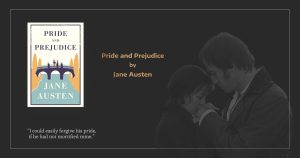
Coming from another outstanding English novelist Jane Austen (1775–1817, aged 41), Pride and Prejudice is possibly her most influential novel. She not only possessed mature writing techniques but also captured the authentic beauty and the vile ugliness buried in the seemingly glorious life of British landed gentries. Unlike Charlotte Brontë, Jane Austen stayed an anonymous author during her lifetime (O’Connor, 2012). Fortunately, her books bring out her charisma with relatable characters, captivating plots, a satirical voice, and philosophical scrutiny of the human heart, inspiring worldwide readers, scholars, and critics for over 200 years after her passing.
Pride and Prejudice depicts a beautiful story between Elizabeth Bennet and Mr. Darcy while discussing social class and reputation. Mr. Darcy’s pride kept him from interacting with people in a different social class, while Elizabeth’s Prejudice led to hasty judgments based on assumptions and gossip. After overcoming their pride and prejudice, they find genuine love for each other.
The Catcher in the Rye (1951)
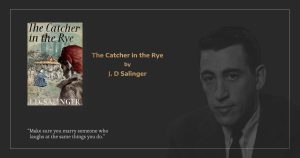
J. D. Salinger (1919 –2010, aged 91) was an American author with notable works of short stories and novellas, and Catcher in the Rye is the only novel he published. At a young age, he was an avid reader and an enthusiastic writer who stayed active in school magazines and drama club productions, but he struggled over institutional confines. Later, he entered the military service in 1942 and served until the end of World War II, encountering famous battles and witnessing intolerable cruelty, which inspired him to complete critical literary works.
Catcher in the Rye communicates with readers using a subjective first-person narration of Holden Caulfield, the adolescent protagonist of the novel, reflecting his transition into adulthood. Holden is expelled from the boarding school and goes to New York for some days before returning home. In his journey, he deals with phoniness, alienation, belonging, sexuality, and the challenges in processing and expressing emotions. The work is frequently banned in libraries and high schools for foul language, sexual references, and encouraging rebellion (Wikimedia Foundation, 2022), which ironically constitute the pain, confusion, and obstacles when teenagers enter the adult world.
The Great Gatsby (1925)
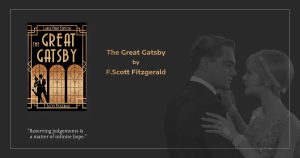
The American author F. Scott Fitzgerald (1896–1940, aged 44) created The Great Gatsby, which wasn’t a success during his lifetime and only gained popularity after World War II. He was born the only son of a middle-class family, where his mother’s inheritance supported his well-off appearance (Wikimedia Foundation, 2022); he always felt like an outcast of the wealthy social class. His first publication promised him a luxurious life in which he was a famous author and a popular celebrity. Soon after, he discovered the profound emptiness hidden in the lavish parties, which inspired The Great Gatsby.
The Great Gatsby focuses on the upper class in the American Jazz Age. Nick Carraway, the novel’s first-person narrator, is an alumnus of Yale University and a World War I veteran, moving to New York City. He becomes close with the mysterious Jay Gatsby after attending Gatsby’s extravagant parties; their friendship opens the reunion of the former lovers, Gatsby and Daisy Buchanan. Daisy’s choice between Gatsby and her husband, Tom, ignites the central conflict, propelling the story’s progression. In addition to examining social class, the book also investigates superficiality and the deterioration of society.
To Kill a Mockingbird (1960)

To Kill a Mockingbird is the best-known composition of the American novelist Harper Lee (1926–2016, aged 89). Her mother was intelligent and a talented pianist but suffered from a mental illness, making her father the most present parent, who, thankfully, is also a sincere listener and mentor (Utah Shakespeare Festival, n.d.). She embarked on a literary career in New York, assisting her close friend Truman Capote in researching and completing a non-fiction work. To Kill a Mockingbird immediately succeeded upon its publication, winning the Pulitzer Prize Winner in Fiction the following year.
Jean Louise Finch, nicknamed Scout, is the first-person narrator of To Kill a Mockingbird that recollects her childhood memories. When she was 6, she lived with her widowed father, Atticus, her older brother Jem, and the family cook Calpurnia. Atticus is a lawyer and educates the children to respect people regardless of class or race. The plot intensifies after Atticus agrees to defend Tom Robinson, a black man accused of raping a young white woman, Mayella Ewell. The novel addresses issues of racism, class division, and inequality and the warmth of courage, compassion, and people’s innate kindness.
To the Lighthouse (1927)
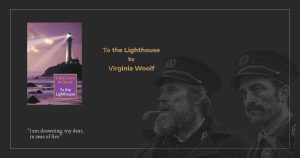
Virginia Woolf (1882–1941, aged 59), the author of To the Lighthouse, was a distinctive English writer who pioneered modernist literature and narration with the stream of consciousness. She describes the human mind in subtle and straightforward sentences without obscure Psychology terms. Being an exceptional observer, she transcribed supposedly mindless occurrences to philosophical thoughts, exemplified in her essays “Death of the Moth” and “On Being Ill.” She reminded us to communicate who we are by using languages to our best abilities, including expressing our physical sensations and emotions to better understand ourselves and the people around us.
The plot of To the Lighthouse is probably the simplest one that you’ll ever come across, depicting the Ramsay family and their guests at a vacation home, where they planned to go to the lighthouse but only visit there 10 years later. The novel is unique in its radically subjective third-person narration, evenly switching focalization from one character to another, including the perspective of a house. The lesson is that there isn’t one correct way to comprehend the world, which relies on fragments of personal truth. The novel also examines ephemerality and eternity; to an individual, time pauses at the “little daily miracles,” such as producing art while others underrate your abilities or cooking a beef stew that everyone at the dinner party loves.
War and Peace (1865)
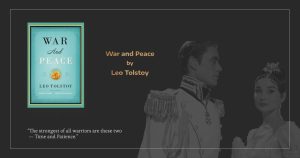
Also composed by the well-known Russian novelist Leo Tolstoy, War and Peace is “not a novel, even less is it a poem, and still less a historical chronicle,” explained by the author (The Narratologist, 2016). The book examines the life of aristocrats, people in the upper ruling social class. There are no main characters; instead, we explore the intertwined relationships featuring historical figures, including Napoleon and Prince Mikhail Kutuzov (Wikimedia Foundation, 2022). Insightfully, Leo Tolstoy interrupts the narration here and there by asking thought-provoking questions, for example, why wars exist, what are effective battle tactics, and what are the forces causing the rise and fall of a nation (TEDEducation, 2017). Don’t be intimidated by the length of the work because War and Peace brings you a refreshing mixture of fictional narrative, historical events, human psychology in war, and philosophical discussions.
Conclusion
With the recommendation of the 10 timeless classic books, I hope you find the ones for you and start a fulfilling journey of immersing yourself in extraordinary worlds. As you turn the pages, I hope you’ll appreciate every line and don’t want the mind-blowing stories to end.
Lastly, I want to give a big shout-out to Gulzar Alshan for creating the elegant images for each of these amazing classics.
References
Academy of American Poets. (n.d.). About Charlotte Brontë. Poets.org. Retrieved October 20, 2022, from https://poets.org/poet/charlotte-bronte
Bengio, Y. (2008, January 13). Neural net language models. Scholarpedia. Retrieved October 22, 2022, from http://www.scholarpedia.org/article/Neural_net_language_models
Flaubert, G. (n.d.). The Letters of Gustave Flaubert: 1830–1857. Harvard University Press. Retrieved October 22, 2022, from https://www.hup.harvard.edu/catalog.php?isbn=9780674526365
Le, H., Vial, L., Frej, J., Segonne, V., Coavoux, M., Lecouteux, B., Allauzen, A., Crabbé, B., Besacier, L., & Schwab,D. (2020). FlauBERT: Unsupervised Language Model Pre-training for French. European Language Resources Association. In Proceedings of the Twelfth Language Resources and Evaluation Conference, Marseille, France. https://arxiv.org/pdf/1912.05372.pdf
O’Connor, K. (2012, July 11). The anonymous Jane Austen. Great Writers Inspire. Retrieved October 22, 2022, from http://writersinspire.org/content/anonymous-jane-austen
Orwell, G. (1946). Why I write. The Orwell Foundation. Retrieved October 22, 2022, from https://www.orwellfoundation.com/the-orwell-foundation/orwell/essays-and-other-works/why-i-write/
Prahl, A. (2019, October 29). Biography of Leo Tolstoy, Influential Russian Writer. ThoughtCo. Retrieved October 20, 2022, from https://www.thoughtco.com/biography-of-leo-tolstoy-4773774
TEDEducation. (2017, April 27). Why should you read Tolstoy’s “War and Peace”? – Brendan Pelsue. YouTube. Retrieved October 22, 2022, from https://www.youtube.com/watch?v=4dn7TEjnbPY&ab_channel=TED-Ed
The Narratologist. (2016, April 13). Book review: “War and Peace” (1869) by Leo Tolstoy. Retrieved October 22, 2022, from http://www.thenarratologist.com/book-reviews/book-review-war-peace-1869-leo-tolstoy/
Utah Shakespeare Festival. (n.d.). About the author: To kill a mockingbird. Retrieved October 22, 2022, from https://www.bard.org/study-guides/about-the-author-to-kill-a-mockingbird/
Wikimedia Foundation. (2022, August 24). Adaptations of Anna Karenina. Wikipedia. Retrieved October 20, 2022, from https://en.wikipedia.org/wiki/Adaptations_of_Anna_Karenina
Wikimedia Foundation. (2022, October 5). Gustave Flaubert. Wikipedia. Retrieved October 22, 2022, from https://en.wikipedia.org/wiki/Gustave_Flaubert
Wikimedia Foundation. (2022, October 16). The catcher in the Rye. Wikipedia. Retrieved October 22, 2022, from https://en.wikipedia.org/wiki/The_Catcher_in_the_Rye
Wikimedia Foundation. (2022, October 17). F. Scott Fitzgerald. Wikipedia. Retrieved October 22, 2022, from https://en.wikipedia.org/wiki/F._Scott_Fitzgerald
Wikimedia Foundation. (2022, October 21). War and Peace. Wikipedia. Retrieved October 22, 2022, from https://en.wikipedia.org/wiki/War_and_Peace

